Mehdi Hassan – The Ghazal Tansen
Although destined to become a classical singer, through his highly emotive voice, extra-ordinary command over Urdu, and classical Ragas, and rigorous, and relentless commitment towards his art, Ustad Mehdi Hassan Khan [here after referred to as Ustadji] became known as the Shehenshah-E-Ghazal [Emperor of Ghazal].
Rigorous Taalim
Ustadji says, “the most essential thing for a singer, is to have control on the breath. To have that, my father and uncle would make me run 3-4 KMs in the morning, followed by 1000 Push-ups, and 2000 sit-ups. In the evening, I had to do wrestling. Along with my fitness, my uncle paid extreme attention to make me perfect in Swaras. I had to practice every note / Palta in Akara, Ikara, Ukara, etc. if you can master all these sounds, you will never sing out of tune. Also, I was trained to sing everything from Khayal, Dhrupad, to lighter forms like thumri/Dadra, etc. because of all these practices, and physical training, I only had 3-4 hours to sleep at night.” This extreme discipline helped Ustadji to elaborate the poetry in Ghazal. He could sing every Sher [couplet] in N number of ways, without changing the Raga.
Raga Based composition, and rendition of Ghazals
Ustadji says, “Many musical forms came and disappeared, but a Raga never becomes old. We have been singing the same Ragas like Malkauns, Bhairav, Etc, for thousands of years, yet they are still young. Because of this, I composed Ghazals in various Ragas, so that they can have a long life. Ghazals like Gulon Mein Rang Bhare (Raga Jhinjhoti), Ranjish hi Sahi (Raga Yaman), etc. are popular because they have the base of Ragas.” Even classical maestros were in awe of Ustadji’s command of Ragas.
Ustad Salamat Ali Khan (a classical legend from Pakistan) shares an incident. “In a concert, Mehdi Hassan was singing. I had never heard him live before. I used to think of him, as a mere Ghazal / light music singer. However, since his songs were quite famous, I decided to sit for his concert. Hassan started a Ghazal in Darbari (Ku-ba-ku fail gayi baat shanasai ki). Before starting it, he beautifully explained the difference between Darbari, and its allied Raga Jounpuri. When I heard it, I realized the greatness of this artist. For the next 6 months, I never could bring myself to sing Darbari in my concerts, because I realized that I could not do as good justice to this Raga as Mehndi Hassan did.”
Ustad Tari Khan, who accompanied ustadji on Tabla, and excellent singer himself, says, “If you tell a classical singer to sing Raga Kirwani, he takes 30-45 minutes to portray the Raga picture, however, when I heard Ustadji’s Ghazal “Shola Tha Jal Bujha Hun”, based on this Raga, I got the Raga picture in mere 7 minutes.”
Ustadji used a wide range of Ragas, right from well-known Ragas like Bageshri, Alhaiya Bilaval, Bhoop, Khamaj, etc, to advance Ragas like Miyan Malhar, Kirwani, Natbhairav, Bhoopal Todi, Basant Mukhari, etc. to even rare ragas like Bhoopkali, Vachaspati, Ahiri Todi, Marwa Bhatiyar, etc. in some Ghazals like Humen koyi gham nahin tha gham-E-ashiqi Se pehele, he has used a mixture of 2 Ragas. he also used the format of Raga Murchana in Ghazals like “Kya bhala tujh ko parakhne ka natija nikla, in which the first couplet is in Malkauns, and others are set to Marwa/Sohni, by making Shuddha Ni as Sa, and singing Malkauns notes. (It is difficult to convey Raga murchana in this Ghazal, through mere written words, the music-lovers should listen to this Ghazal to get the full understanding of it.) Another example is the Ghazal Aap ko bhool jaaye hum, set to Raga yaman, which gives the feel of Darbari, and its allied Ragas.
Thoughts on composing and rendering Ghazals
Ustadji says, “in early 1950s Pakistani public was not aware of classical music. Artists like Ustad Nazakat and Salamat Ali Khan put in a lot of effort to create awareness about the same. I thought that, just like classical music, people should also enjoy the excellent poetry of great Urdu Poets such as Ghalib, Daar, etc. so I composed their Ghazals in various Ragas. In childhood, I could speak Marwari, Punjabi, and Hindi, and had training in Sanskrit, but not in Urdu. I put in a lot of effort to learn the same. While doing that, whenever I composed a Ghazal, first I would ask its meaning to the poet / Urdu expert. Once I understood it, I would search for the Raga, which can express this thought, in the best manner, and set the tune accordingly. Even while rendering Ghazals, my focus is to keep the Raga as pure as I can, without compromising on the lyrical beauty. If I use other notes, which are not there in that Raga, while elaborating, it means that I am short of material.”
While ustadji maintained the purity of Ragas in most of his Ghazals, sometimes he would change the Raga, which also was very effective. For example, while singing the Ghazal “Main Khayal Hun Kisi Aur Ka” (Raga Bhairavi) he would shift to Raga Lalat, or while elaborating the line “Beet Gaya Saawan ka Mahina, from the Ghazal “Dil ki baat labon par laa kar (Raga Bageshri), he would use the Madhyama of that Raga to shift to Pahadi, to successfully come back to Bageshri again.
Ustadji always emphasized the purity of any musical form. He says, “Our forefathers always told us not to mix things from different musical forms. In other words, a Khayal should be sung like a Khayal, and should not have Murkis from Thumri. Similarly, if I use Dhrupad Style Taans in Ghazals, it would be just like painting a mustache on a woman’s face. So even though, my Ghazals are in Ragas, I sing them using the things suitable to light music.”
Conclusion: Through rigorous study of various musical forms, command over various languages, and relentless commitment towards music, Ustad Mehdi Hassan Khan became the Tansen of Ghazals.
- By – Bhushan Toshniwal,
Bhushan Toshniwal is a trained Hindustani and Carnatic singer and is a graded artist of All India Radio and Doordarshan.


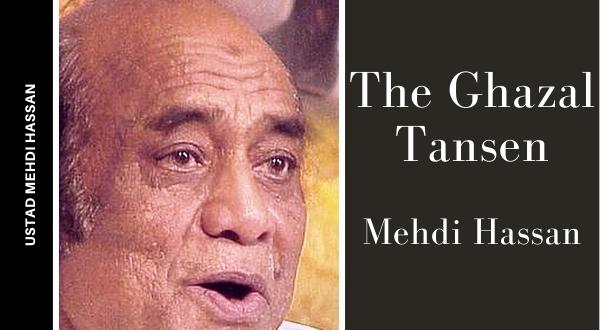
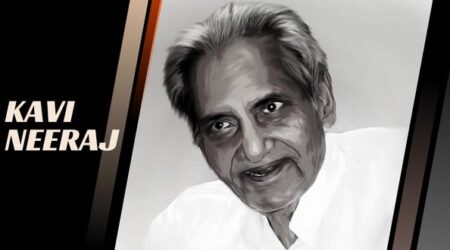
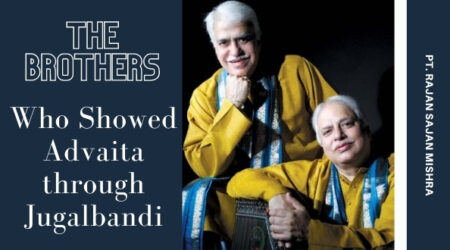
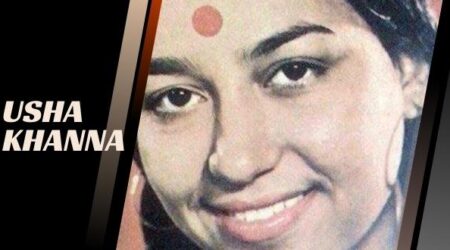
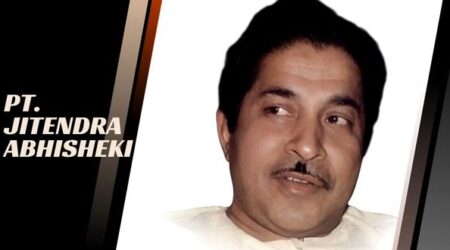
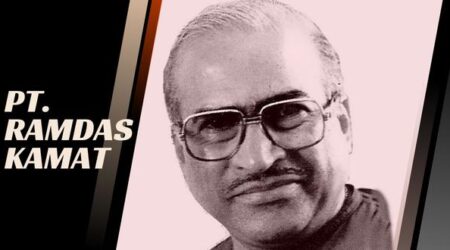
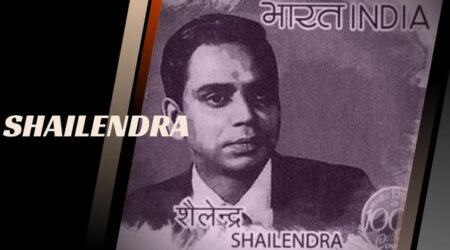
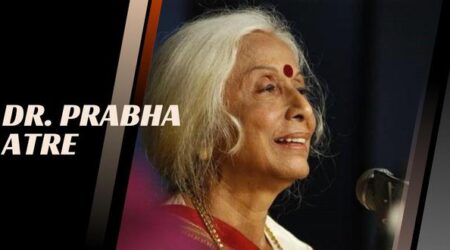
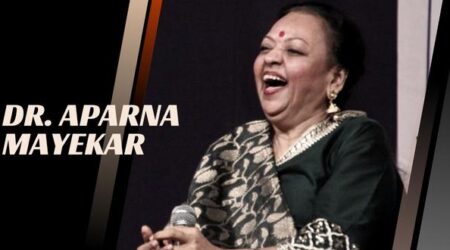
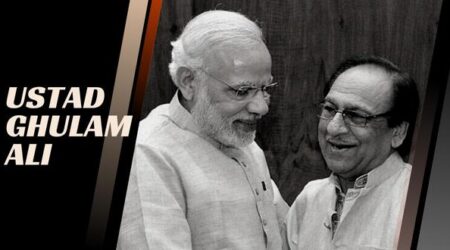
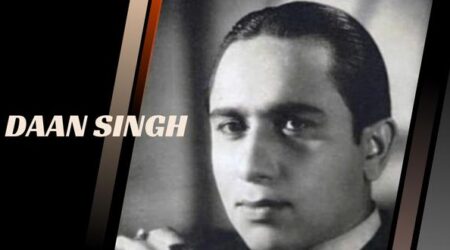

Comments (6)
Very informative message for singers. Dineshbhai small small things r very important in life also. Thanks for sharing this information.???
Its a wonderful treasure write up. I am lucky that have heard him live twice in my city Surat.
First time when he came he was welcomed on elephant and full road Red Carpet. In the show of a cultural group Saptarshi.
Hearing Ustaad ji in live is a life time experience. Hearing classical base ghazal singers is not a love at first sight. One must have that passion and zest to hear the semi classical and classical music which will guide your way on enjoying these great people.
Even the Pakistani film songs of Ustaad ji are very famous.
Superb Information Dinesh. Thanks for sharing.
Paresh Raja
An amazing read for all music lovers specially indian classical music lovers. Very informative. Thank you for sharing this article.
Very important information you have shared Dineshji, from this one must learn how classical ragas to be learned & also control over breathing is also important to render a perfect song , thanks a lot
This is a treasure of an article on Shahanshah-e-Ghazal. One of most erudite pieces i have read on Mehdi Hassan. I am so glad I stumbled upon this gem. Many thanks to its writer Bhushan ji. I am a Mehdi fan with no understanding of ragas, I just love his ghazal renditions. With my limited knowledge of Urdu poetry, I have felt him lift a ghazal to rare heights with his composition and singing. Incredile piece!